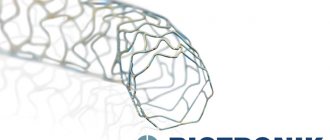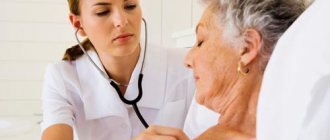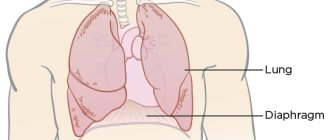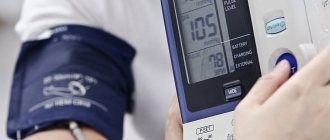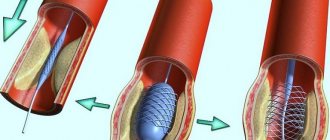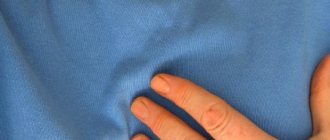Among diseases that can suddenly worsen and lead to extremely negative consequences, myocardial infarction is especially dangerous. Treatment should be started as early as possible. At the initial stage, it may consist of first aid, and the rehabilitation stage can last for several months. The patient is provided with comprehensive care, including drug treatment, surgical and non-surgical methods, and rehabilitation therapy aimed at eliminating the symptoms of the disease. With a professionally designed recovery program, life after a heart attack can return to normal, subject to certain restrictions.
Stages of treatment of myocardial infarction
- At the prehospital stage, if there are symptoms of the disease, the patient is given first aid and transported to the clinic.
- The hospital stage involves carrying out medical measures aimed at maintaining body functions and combating negative consequences.
- The rehabilitation stage is carried out in sanatoriums where special conditions have been created.
- At the stage of dispensary observation and outpatient treatment, the patient periodically visits the cardiology clinic and the doctor at his place of residence.
The high professionalism of doctors and the technical equipment of the clinic where you are being treated after a myocardial infarction are extremely important. With qualified specialists and high-quality rehabilitation, you will avoid complications and continue to live a full life.
Features of rehabilitation
The most acute period usually lasts up to six hours from the moment of the attack, the acute period - up to seven days. Scarring takes 28 days. Rehabilitation after a heart attack takes place in several stages, requiring the patient to give up bad habits and review all the main aspects of life:
- lifestyle;
- physical activity;
- diet.
The psychological attitude is of great importance. The duration of rehabilitation at the inpatient and outpatient stages depends on the patient’s condition. The final stage has no deadline - it lasts a lifetime.
First aid for myocardial infarction
Every person should be able to provide emergency care for myocardial infarction, because most people suffer from cardiovascular diseases, and the risk of developing this pathology is extremely high.
At the first symptoms, you must immediately call an ambulance, preferably a specialized cardiac team equipped with a defibrillator, pacemaker, and medications.
While you are waiting for the doctors, give the patient nitroglycerin under the tongue, analgesics, aspirin, Corvalol or Valocordin. If the patient suffers from arrhythmia, antiarrhythmic drugs will be needed.
If acute myocardial infarction is accompanied by cardiac catastrophe and loss of breathing, resuscitation should be started immediately. Lay the patient down, open his mouth slightly and cover him with a handkerchief. Exhale deeply through the handkerchief into the patient's lungs. Pinch his nose to prevent air from escaping.
While the patient's chest spontaneously lowers, straighten up, take a breath and repeat the manipulation several times. If there is no pulse in the carotid artery, indirect cardiac massage is necessary. The classic formula includes 15 chest compressions for 2 consecutive air injections. Actions must be continued until the patient’s skin turns pink, the pupils constrict, and a pulse appears.
What is a heart attack and what do you need to know about it?
To pump blood, the heart constantly needs oxygen and nutrients. The two large coronary arteries supply oxygenated blood to the heart muscle. If one of these arteries or their branches suddenly becomes blocked, a certain part of the heart becomes starved of oxygen. This phenomenon is called cardiac ischemia.
In the case of prolonged cardiac ischemia, tissue that does not receive oxygen dies, which is actually called a heart attack, myocardial infarction, or, literally speaking, the death of the heart muscle.
Most heart attacks last for several hours, so don't wait to seek help if you suspect a heart attack. In some cases, heart attack symptoms may not appear at all, but most heart attacks cause chest pain. Other signs of a heart attack include:
- difficulty breathing;
- dizziness;
- fainting;
- nausea.
The pain that occurs during a heart attack can be compared to a feeling of compression of the heart. The pain may be constant or intermittent. It is also worth noting that the signs of a heart attack in women and men may be different.
Drug treatments for myocardial infarction
The purpose of using medications in the hospital is to restore and maintain circulatory functions, as well as relieve unbearable pain.
- Painful sensations can be eliminated with the help of analgesics, and the feeling of fear can be eliminated with tranquilizers.
- To prevent the formation of a blood clot, acetylsalicylic acid and anticoagulants are used.
- If a blood clot has already formed, powerful thrombolytics are used to dissolve it.
In the treatment of acute myocardial infarction, a special place is given to thrombolytic therapy to eliminate the risk of new blood clots. Arrhythmia is a common occurrence in this disease, so the patient is offered antiarrhythmic drugs, adrenergic blockers, nitrates, and vitamin E.
Rehabilitation after acute myocardial infarction involves taking medications to maintain normal blood pressure and prevent blood clots.
Angioplasty and coronary artery stenting
One of the effective and widespread methods of treating acute myocardial infarction throughout the world is coronary angioplasty with the possibility of installing a stent. The advantage of the operation is that it is extremely minimally traumatic: a small puncture is sufficient to insert a catheter into a peripheral vessel (usually the femoral artery serves as a transport vessel). The goal of high-precision manipulation is to widen the coronary artery in the place where it is blocked.
The catheter, under the control of X-ray equipment, is passed through the vascular system to the site of narrowing of the coronary artery. At the end of the catheter there is a miniature balloon, which is in a compressed state. An X-ray contrast agent is injected into the vessels, and the doctor has the opportunity to observe the manipulations on monitors in the operating room. The cardiac surgeon places a balloon in the affected area of the vessel and inflates it with special equipment, thereby restoring blood flow.
To prevent the walls of the artery from narrowing again, a cylindrical stent is inserted into it in the same way and secured. Thus, it replaces the affected area of the vessel.
Coronary artery bypass grafting
It is also a very effective method of treating myocardial infarction. The purpose of this operation is to create a new path for the blood, bypassing the vessel affected by atherosclerosis. For this, a special shunt is used - a part of the patient’s own vessel, taken from the thoracic artery or radial artery of the arm. It is sewn into the narrowed or blocked artery above and below the site of the lesion. Thus, the volume of blood required for heart function is normalized. Doctors are able to restore blood circulation in the affected area of the heart muscle in a short period of time.
The operation eliminates the very cause of the heart attack and is often performed as planned so that the patient can avoid a heart attack. The risk of developing a heart attack after surgery is significantly reduced, and the patient regains ability to work with a normal amount of physical activity.
Coronary artery bypass grafting is a type of open intervention for a beating heart. That is, to carry it out it is necessary to open the chest. There are options for surgery with or without artificial circulation.
Symptoms of the disease
The main symptom is acute chest pain that does not go away after taking nitroglycerin. It occurs suddenly and gets worse quickly. The attack may be accompanied by shortness of breath, cough, and arrhythmia. If the pain lasts more than 15 minutes, you must call an ambulance. The sooner the blood supply to the heart is restored, the smaller the size of the dead area will be.
In a third of patients, myocardial infarction occurs in an atypical form, which significantly complicates early diagnosis and leads to the loss of precious time. Experienced caregivers know about this and can predict the development of an attack based on indirect symptoms. Patients with diabetes may not feel pain. In women, it is often localized in the arm or neck and is accompanied by fatigue. Atypical forms of heart attack also appear:
- pain in the abdomen, throat, lower jaw;
- nausea;
- dizziness;
- confusion;
- cold sweat;
- swelling;
- a sharp decrease in blood pressure.
In many cases, the only symptom of a heart attack is sudden cardiac arrest. In such cases, only urgent resuscitation measures can save the patient.
A delay in treatment of myocardial infarction can cause complications such as:
- cardiogenic shock,
- acute and chronic heart failure,
- arrhythmia,
- arterial hypotension,
- heart aneurysm.
If you suspect an attack, the patient must first be seated and removed from constricting clothing. Then you need to measure his pressure, give crushed aspirin or nitroglycerin (for high blood pressure) and call an ambulance. The services of a nurse significantly increase the chances of patients undergoing surgical treatment. Regular care after a heart attack reduces the likelihood of a recurrence.
Myocardial infarction: rehabilitation and life after an attack
At the rehabilitation stage, it is important to gradually expand the patient’s activity. For this purpose, professional cardiology clinics and sanatoriums use modern programs aimed at preventing and treating muscle atrophy and pulmonary congestion. They include physical therapy and physiotherapy.
Life after a myocardial infarction does not end at all if the patient is offered a competent and effective rehabilitation program. In some cases, the patient will have to change his job if it involves physical or emotional stress.
Where to undergo recovery: list of centers and institutions
In Russia there are many resorts and health centers specializing in cardiac pathologies. The choice of the necessary institution is carried out depending on concomitant diseases, geographic location and financial capabilities of the patient.
The most popular cardiac rehabilitation centers in the country:
- Kislovodsk (Stavropol Territory) is a balneoclimatic resort from the group of Caucasian mineral waters;
- sanatorium named after Kirov (Crimea);
- rehabilitation center named after. Herzen (Moscow region);
- sanatorium "Zvezdny" (Krasnodar region), which also treats patients with pathologies of the respiratory system, digestion, kidneys, and skin;
- rehabilitation center of the clinic named after. N.I. Pirogova deals with seriously ill patients after a heart attack and complex operations on blood vessels and the heart;
- sanatorium "Electra" (Irkutsk);
- sanatorium-preventorium "Salyn" (Bryansk region).
It is necessary to select an institution for rehabilitation among proven, certified sanatoriums that offer specialized medical services.
Diet after myocardial infarction
Life after a heart attack involves following a diet with foods that do not put a strain on the vascular system. Nutrition after myocardial infarction should include easily digestible food, and it should be taken 5-6 times a day in small portions. The diet should include cereals, low-fat dairy products, juices, vegetables, and dried fruits.
The most strict diet is during the hospital period. It includes unsalted liquid porridges, vegetable soups made from ground products. In the future, nutrition will be normalized. Coffee, tobacco, and alcohol are strictly prohibited!
Treatment and rehabilitation after myocardial infarction using shock wave therapy
One of the effective methods of treating coronary heart disease, allowing you to avoid a heart attack or restore the body after the disease. It is used in cases where traditional methods of coronary artery bypass grafting and stenting are contraindicated or do not produce any effect.
Specialized equipment uses an ultrasound scanner to focus acoustic waves onto the area of myocardial ischemia. With non-contact exposure, new vessels are formed, resulting in a bypass effect - the blood supply to the heart improves, the number of angina attacks decreases.
The method is attractive due to its absolute painlessness. During the procedure, blood pressure does not change and heart rhythm is not disturbed. No side effects were recorded. After a course of procedures, you will be able to increase physical and emotional stress, and reduce the amount of medications consumed.
On the topic “Shock wave therapy for coronary heart disease,” watch the recording of the program “About the Most Important Thing” on Russia 1 channel, which was filmed with the participation of our cardiologist Elena Pisanko. The filming contains a clear example of the procedure itself, which took place in our clinic.
Treatment and rehabilitation after myocardial infarction using enhanced external counterpulsation
UNC is an effective alternative to coronary artery bypass grafting, a modern and safe procedure. This non-surgical treatment method is widely used in modern medicine and professional sports. Its goal is to improve the blood supply to the heart without causing any surgical trauma to the patient. For this purpose, special cuffs are used that are placed on the patient’s limbs. Air is injected into the cuffs at a certain rhythm (coordinated with the contractions of the heart muscle) and then removed.
The effect is a 4-fold increase in blood supply to the affected areas of the heart and the formation of new vessels in it. High rates can be achieved in 90% of patients in whom the risk of heart attack is reduced or its consequences are reduced. Your body's metabolism, cholesterol levels and blood pressure will be normalized, and you will be able to increase the amount of physical activity.
On the topic “Enhanced external counterpulsation”, watch the recording of the program “About the Most Important Thing” on the Russia 1 TV channel, which was filmed with the participation of our cardiologist, cardiovascular surgeon Alexei Utin. Also, the filming contains a clear example of the procedure itself, which took place in our clinic.
Why is the psychological aspect important?
Open heart surgery is a huge stress factor that affects everyday life for a long time. Before coronary bypass surgery, a person experiences a huge fear of death, after the operation - an intermediate state between euphoria and depression. It is difficult for the patient to adapt to the changes that occur in his body.
As a result, complications may arise:
- persistent neurotic disorders;
- decreased ability to work;
- low motivation for any activity;
- decreased quality of life.
All this happens despite obvious improvements in the person’s physical condition. Therefore, it is extremely important to pay special attention to the psycho-emotional state of the patient. The medical center employs experienced psychologists who will help you adapt to the changes that have occurred.
Hypoxic therapy - effective recovery after myocardial infarction
This is an effective non-surgical way to restore the functionality of the body, improve the quality of life after acute myocardial infarction, as well as the ability to prevent it. The procedure takes place in a special room. The hypoxicator device reduces the amount of oxygen in the air by several percent, maintaining normal atmospheric pressure. The oxygen delivery system in the patient’s body begins to work more actively, as a result of which the level of hemoglobin increases, and new blood vessels form in the myocardium.
Hypoxytherapy allows you to partially “revive” heart muscle tissue that has become dead during a heart attack. And in patients at risk of developing this disease, oxygen saturation of the heart improves. This eliminates the very cause of the heart attack.
Your body will be able to tolerate physical activity 70-80% easier in case of heart failure and coronary artery disease. In 75% of cases, positive changes are recorded after a course of treatment.
Main groups of drugs:
1. Beta blockers
. Prescribed to almost all patients after MI, regardless of the presence or absence of heart failure. They reduce the myocardial oxygen demand and reduce the risk of sudden death, and also help to increase life expectancy.
2. Antiplatelet agents.
They prevent the formation of blood clots in blood vessels, reduce inflammation in the inner choroid, and reduce the risk of developing vascular accidents (heart attacks, strokes).
3. Statins.
They reduce the level of atherogenic cholesterol (low-density lipoprotein cholesterol - LDL-C), preventing the progression of atherosclerosis and the formation of new atherosclerotic plaques in blood vessels. It has been proven that reducing the concentration of LDL cholesterol by 1 mmol/l reduces the risk of death from coronary artery disease and its complications by 34%, as well as the need for surgical treatment.
4. Nitro drugs.
They are used if the patient continues to have angina attacks, or signs of silent ischemia are recorded on the electrocardiogram.
5. Antiarrhythmic drugs.
Prescribed if necessary for the treatment of various types of arrhythmias, which sometimes occur in patients who have had a myocardial infarction.
6. Antihypertensive drugs.
Prescribed if it is necessary to treat hypertension, usually several drugs are selected, the combination of which gives the optimal result for each patient.
Drug therapy is carried out under the supervision of a cardiologist. Before discharge, patients meet with the doctor daily, then 1-2 times a month in the first year and once every three months in the second. Periodically, you need to repeat an ECG, blood lipid test, exercise testing and other examinations as necessary.
A comprehensive rehabilitation program, subject to all principles, helps patients recover in a shorter time, improve their quality of life, and prevent recurrent heart attacks and other complications.
SARU.CLO.19.05.0797
Ultraviolet irradiation of blood
This method of treating the consequences of myocardial infarction, used in CBCP, also improves the quality of life after this disease. Does not require any surgical intervention in the patient's body. In this case, no blood is drawn: a special needle connected to a UV emitter is inserted into the patient’s vessel. The device affects a small volume of blood with low-power radiation, which is not felt at all by the patient.
Under the influence of UV radiation, a photochemical reaction occurs in the blood and plasma, as a result of which their composition and functionality improves. It is possible to achieve a significant reduction in blood viscosity (eliminate the risk of blood clots), activate metabolism, improve oxygen delivery to heart tissue, and dilate blood vessels.
Ultraviolet irradiation of blood attracts, first of all, its restorative effect. If you want to “rejuvenate” your heart without resorting to surgery, this method opens up wide possibilities for you.
Infusion therapy
Drug drips are an integral part of treatment for symptoms of myocardial infarction. In particular, with this disease, ventricular tachycardia may occur, for which infusion solutions are indicated. In some cases, the Bezold-Jarisch reflex occurs in the myocardium, which is also suppressed by drugs administered through IVs. Anticoagulants and antiarrhythmic drugs are also administered. The method allows drugs to be distributed throughout the vascular system in the shortest possible time.
Therapeutic exercises are a necessary element in the rehabilitation complex after myocardial infarction
Physical activity after myocardial infarction, along with a proper diet, is necessary for the full restoration of the functions and functioning of the heart and the body as a whole. In the absence of complications, the doctor creates an individual set of exercises for each patient. Therapeutic exercise is carried out even during bed rest - starting with movements of the hands and feet and ending with turns on different sides, moving to a sitting position. After discharge from the hospital, recommendations for rehabilitation and lifestyle after an attack necessarily include daily walking a certain distance.
Prices for cardiac rehabilitation
| Name of service | Duration of 1 procedure in minutes | Frequency of procedures per course |
| Primary appointment with a general practitioner | 60 | 1 |
| Appointment with a doctor for physical therapy + individual physical therapy session | 60 | 1 |
| Appointment with a physiotherapist + a set of physiotherapeutic procedures | 60 | 1 |
| Initial appointment (testing, consultation) with a medical psychologist | 60 | 1 |
| Short appointment with a neurologist | 15 | 1 |
| Study of respiratory function (spirometry) with physical activity | 30 | 1 |
| Electrocardiography with exercise | 30 | 1 |
| Diagnosis of heart rate variability | 30 | 1 |
| Individual physical therapy sessions | 45 | 4 |
| Individual training on a bicycle ergometer | 30 | 5 |
| A set of physiotherapeutic procedures (magnetic therapy/ultraphonophoresis/laser therapy/electrotherapy), up to 2 procedures per session | 20 | 4 |
| Program cost 40,200 rubles | ||

